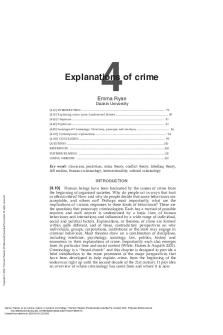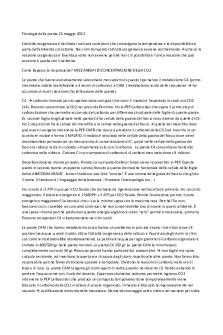C4 Z-eff & Electron Energies PDF

| Title | C4 Z-eff & Electron Energies |
|---|---|
| Course | General Chemistry I W/Lab |
| Institution | Emory University |
| Pages | 4 |
| File Size | 236.4 KB |
| File Type | |
| Total Downloads | 54 |
| Total Views | 130 |
Summary
assignment for chem 141 (intro chem)...
Description
CHEM 141 FALL 2015 EFECTIVE NUCLEAR CHARGE AND ELECTRON ENERGIES Group Name _______________
How does the effective nuclear charge affect the energy of an electron? For the hydrogen like atoms we have been studying up to now (think Bohr model etc.) there is only one electron to be considered and so we need only look at its interaction with the nucleus to determine the electron energy. This energy is determined by Coulomb’s Law: 𝐹= 𝑘
𝑞1 𝑞2 𝑟2
Coulombs law, above, relates the force between two charged particles. In Coulomb’s Law, k is a constant, q1 and q2 are the charges of the two particles, and r is the distance between the two particles. When q1 and q2 have opposite signs, the force between the two particles is attractive in nature. When considering the energy of an electron, we recognize that q1 is the effective charge of the nucleus (represented by Zeff, which is related to, but not equal to, the atomic number) and q2 is the charge of the outermost electron (i.e., the electron that defines the size of the atom and would be removed for ionization). The average distance between the nucleus and the outermost electron is r, the radius of the atom. Since all electrons have a constant charge, Coulomb’s Law can be simplified as: 𝐹∝
𝑍𝑒𝑓𝑓 𝑟2
where the symbol means “is proportional to”. Key Questions 1. Consider the atoms H and He1+. Both of these atoms have their outermost electron in the 1s shell. Which would have the greater energy. Explain your answer using Coulomb’s law. H has a Zeff = 1+ whereas He+ has Zeff = 2+ therefore He+ will have the greater attractive force (and therefore lower energy) 2. Now let’s compare the He1+ atom to the excited He1+ atom. In the excited atom the electron has been promoted up to the 2s shell. Diagram what each of these would look like on the following using a dot for the electron and explain, using Coulomb’s law, which would have the higher energy.
2p
+
n=1 n=2
+
2p
n=1 n=2
The second picture, with the electron in n = 2 would have a smaller attractive force (distances is larger so you are dividing by a larger number in Coulomb’s law) and therefore would be higher in energy.
3. Now consider the lithium atom. While the electrons are not in fixed orbits, the electrons in the 1s orbital are most likely to be closer to the nucleus than the electron in the 2s orbital. Suppose at some moment in time the lithium atom looked like the Bohr model to the right (which is not drawn to scale).
+
3p
n=1 n=2 Explain why the Zeff of the lithium atom (focus on the outermost electron) is less than the total charge of three protons. (What type of force exists between the electron in the 2nd shell and the electrons in the 1st shell? Note how the electrons in the 1st shell are drawn relative to the electron in the 2nd.) The electron in the n = 2 level feels an attraction to the 3p+ of the nucleus but also feels a repulsion from the 2 electrons in the n = 1 level. We say that the n = 1 electrons shield the nucleus for the n = 2 electrons making the Zeff ~ 1 for the outermost electron. The Model: Atomic Radii of Elements in the Same Group Electrons in the nth shell shield electrons in the (n+1)th and higher shells nearly 100% effectively. That is, an electron in the outermost shell (i.e. the valence shell) sees a nucleus with an effective nuclear charge that is decreased by every electron in the core shell(s). Atoms within the same group (column or family), therefore, have nearly the same effective nuclear charge. Elements within the same group typically have similar valence electron configurations. Given these facts, the thing that makes an element with a higher Z different than that of a second element with a lower Z in the same family is the expected radius of outermost shell of electrons. This is sometimes referred to as inner shell shielding. Using the Alkali Metals (group 1A) as an illustration:
4. a. What is the trend in atomic radius in a group (or column or family) as Z increases? As Z increases (going down a groups) the radius increases b. Explain the trend in Question 2a. (Comparing the element at the top of the group with the element at the bottom of the group, what happens to the value of n for the valence electron? What does n inform us of? What kind of force exists between an electron in the valence shell and the electrons in the core shells?) As you move down a group the outer most (aka valence) electron in in a higher and higher n therefore we can conclude that n is related to size. The core shells shield (repel) the valence shell
5. A transition element of the 6d block has nearly the same atomic radius as the transition element of the 5d block in the same family. (For example, niobium and tantalum each have an atomic radius of 143 pm. And some 6d-block transition elements are actually smaller than the element immediately above it on the periodic table!) This phenomenon is referred to as the “lanthanide contraction”. Use differences in effective nuclear charges between transition metals within the same family to explain the lanthanide contraction. For the 6d electrons the 5f (and 4f for the 5d) electrons do not fully shield the valence shell. So, you add 14 protons for the f shell that are not fully shielded by the added 14 f electrons and the atomic radius decreases as the Zeff is greater for the 6d than the 5d.
The Model: Atomic Radii of Elements in the Same Period Electrons within the same shell do not shield each other from the nucleus 100% effectively. When determining the effective nuclear charge experienced by the outermost electron, each other electron with the same value of n typically only reduces Zeff by ~0.35 of a proton. Therefore, within a period of the periodic table, for an increase of Z of 1, Zeff increases by 0.65 of a proton. This is sometimes referred to as same shell shielding Key Questions 6. Compare the effective nuclear charge of elements in the same period of the periodic table. (For example, how does the Zeff of lithium compare to the Zeff of neon?)
Zeff for Ne is higher than that of Li so it increases as you move left to right
7 a. According to Coulomb’s Law, as the effective nuclear charge increases, what happens to the force of attraction between the nucleus and the outermost electron? As Zeff increases the force of attraction increases (lower energy for the system)
b. If the force of attraction between the nucleus and the outer-most electron were to increase, what would happen to the distance between the nucleus and that electron? As the force of attraction increases the distance decreases (opposites attract)
8. In going from left to right across a period on the periodic table, what happens to the atomic radius of an element? (Refer to Questions 6 & 7 as you answer this one.) From left to right across the periodic table the radius decreases
The Model: Ionic Radii When an atom loses one or more electrons, it becomes a cation. When an atom gains one or more electrons, it becomes an anion. Once an electron has been lost or gained by an atom, the new outermost electron no longer experiences the same amount of shielding that did the “old” electron that once defined the atom’s radius. As a result, the radius of an ion is different than the radius of a neutral atom of the element. Key Questions 7 a. Suppose the outermost electron is lost by an atom. What happens to the amount of shielding that is experienced by the new outermost electron? Is it the same as before, or does it …. decrease, or does it increase? (Circle the correct answer.) b. As the amount of shielding that the outermost electron experiences decreases, what happens to the effective nuclear charge? Increases
c. According to Coulomb’s Law, as the effective nuclear charge increases, what happens to the force of attraction between the nucleus and the outermost electron? Increases
d. What happens to the radius of an atom when it becomes a cation? Decreases
8. What happens to the radius of an atom when it becomes an anion? Provide an explanation that involves (a) the relative amounts of shielding before and after the electron was added, (b) what happens to the effective nuclear charge, and (c) Coulomb’s Law. Increases. Same number of protons in the nucleus but the Zeff decreases given the shielding of the additional electron. Lower Zeff means lower coulombic attraction and therefore larger radius. 9. Arrange each set in order of decreasing atomic size. Briefly explain your reasoning. a.) Ge, Pb, Sn
Decreasing size:
Pb >Sn > Ge
Reasoning: Atoms are in the same group and therefore Z eff is similar but as n increases the radius increases as the electrons are further from the nucleus
b.) Sn, Te, Sr:
Decreasing size:
Sr > Sn > Te
Reasoning: All are in the same row and within a shell valence electrons only partially shield each other therefore Zeff increases across the row 2-
2-
2-
c.) Se , S , O
Decreasing size:
Se2- >S2- > O2-
Reasoning: All have the same charge and are in the same group and therefore have approximately the same Z eff. As n increases the radius increases as the electrons are further from the nucleus 2-
+
-
d.) Te , Cs , I
Decreasing size:
Te2- > I- > Cs+
Reasoning: These elements are also isoelectronic with the same number of total electrons (54). Cs has the greates nuclear charge and therefore greatest Zeff....
Similar Free PDFs

C4 Z-eff & Electron Energies
- 4 Pages

C4
- 10 Pages

Ionisation Energies
- 1 Pages

Law of specific nerve energies
- 4 Pages

Unidad C4
- 2 Pages

Exercise - C4
- 2 Pages

C4 - chapter4
- 24 Pages

Electron configurations
- 4 Pages

C4 e cam
- 5 Pages

Electron Density Lab
- 7 Pages

Simulado Espin del Electron
- 2 Pages

Outfitters- Final Project- C4
- 19 Pages

Piante C3 C4 CAM
- 4 Pages
Popular Institutions
- Tinajero National High School - Annex
- Politeknik Caltex Riau
- Yokohama City University
- SGT University
- University of Al-Qadisiyah
- Divine Word College of Vigan
- Techniek College Rotterdam
- Universidade de Santiago
- Universiti Teknologi MARA Cawangan Johor Kampus Pasir Gudang
- Poltekkes Kemenkes Yogyakarta
- Baguio City National High School
- Colegio san marcos
- preparatoria uno
- Centro de Bachillerato Tecnológico Industrial y de Servicios No. 107
- Dalian Maritime University
- Quang Trung Secondary School
- Colegio Tecnológico en Informática
- Corporación Regional de Educación Superior
- Grupo CEDVA
- Dar Al Uloom University
- Centro de Estudios Preuniversitarios de la Universidad Nacional de Ingeniería
- 上智大学
- Aakash International School, Nuna Majara
- San Felipe Neri Catholic School
- Kang Chiao International School - New Taipei City
- Misamis Occidental National High School
- Institución Educativa Escuela Normal Juan Ladrilleros
- Kolehiyo ng Pantukan
- Batanes State College
- Instituto Continental
- Sekolah Menengah Kejuruan Kesehatan Kaltara (Tarakan)
- Colegio de La Inmaculada Concepcion - Cebu


